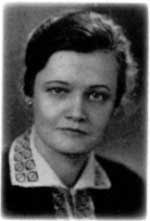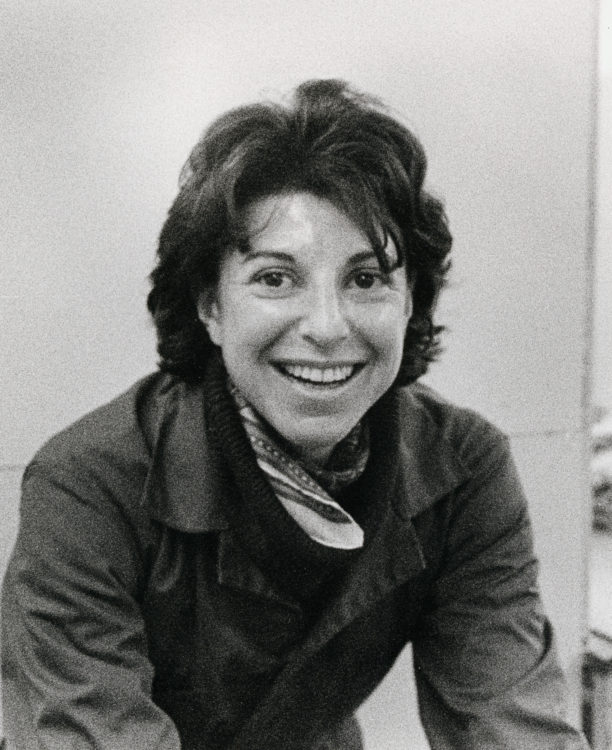Wanda Czełkowska
Taszycka, Matylda (ed.), Wanda Czełkowska: Art Is Not Rest, exh. cat., Muzeum Susch, Susch [July 15– November 26, 2023], Turin, Skira, 2023
→Opałka, Ewa (ed.), Wanda Czełkowska: Retrospekcja [Retrospective], exh. cat., Warsaw, Muzeum Rzeźby im. Xawerego Dunikowskiego [November 6, 2016 – February 12, 2017], Warsaw, Muzeum Rzeźby im. Xawerego Dunikowskiego, 2017
→Grubba-Thiede, Dorota, Nurt figuracji w powojennej rzeźbie polskiej [The trend of figuration in post-war Polish sculpture], Varsovie, Polski Instytut Studiów nad Sztuką Świata, 2016
Elegia, Galeria Zderzak, Cracow, 9-11 March 1990
→Przypomnienie po latach, Galeria Zderzak, Cracow, 13-27 March 1990
→Wanda Czełkowska: Rysunki, Galeria Współczesna, Warsaw, January- February 1969
→Wanda Czełkowska, Galeria Krzysztofory, Cracow, October 1963
Sculptrice, peintre et dessinatrice polonaise.
Wanda Czełkowska spent her earliest years in Vilnius (now part of Lithuania) but left at the end of the Second World War. She studied sculpture at the Academy of Fine Arts in Kraków (1949–1954) in a context marked heavily by Socialist Realism.
From 1955 to 1959, she made figurative sculptures reflecting her interest in Greek and Etruscan art; this influence is particularly salient in Człowiek [Man, 1956] and Autoportret [Self-portrait, 1959]. In the early 1960s, her volumes became simpler and the features of her faces more geometric. In 1963, at the Krzysztofory Gallery in Kraków, W. Czełkowska had her debut solo exhibition. Art critic Piotr Krakowski described her art as ‘Neo-Expressionist’. In the same year, her Autoportret was exhibited at the Third Paris Biennale. Settling in Paris with a scholarship, she spent time with graphic artist Roman Cieślewicz (1930−1996) and sculptor Alina Szapocznikow (1926−1973), his partner. Afterwards, back in Kraków, she began working intensively on new sculptures, including Głowa [Head, 1964], with deeply carved features.
In the mid-1960s she started making series of abstract drawings and paintings, experimenting with fragmented forms through interplays of filled and negative spaces. The motif of the circle also appeared in her work, heralding the Heads series she began in 1968. In the same year, Tadeusz Kantor (1915–1990) invited her to join the II Grupa Krakowska; this established her legitimacy in the Polish avant-garde.
In 1970 W. Czełkowska published the protocol for her installation Stół [Table], which she exhibited in December 1971. She displayed her eighteen plaster heads on an oversized table rather than on pedestals, explaining that “this arrangement [was] made by chance” but “[could] not be changed” once made. In 1972, Richard Demarco (1930–) invited her to reproduce the installation for Atelier ’72, an Edinburgh exhibition he was curating. She presented Informacja pojęciowa o Stole [Conceptual Information about Table] featuring panels illustrating the project. The heads were exhibited directly on the ground, an approach the artist would also adopt in her studio for the remainder of the decade. W. Czełkowska then designed Bezwzględne wyeliminowanie rzeźby jako pojęcie kształtu [Absolute Elimination of Sculpture as a Notion of Form], presenting a model of it with photographic documentation in 1973. This radical installation fully embraced modularity: sculpture became an empty space ‘framed’ by sixty-six concrete slabs on the floor and sixty-six light bulbs suspended from the ceiling. It was only in 1995 that she managed to execute the piece in a full-scale version, at the Centrum Rzeźby Polskiej [Centre for Polish Sculpture] in Orońsko.
The year 1975 saw her first realisation of Ściana [Wall], composed of frames arranged on a visible metal structure. On the façade, twelve drawings of heads wrapped in fabric and tied up with rope echoed a sculpture placed on the ground. She later made Głowa – ciąg kinetyczny [Head – Kinetic Suite], a series of canvases devoted to the motif of heads. This depiction now evoked a machine in motion, an early examination of questions about the relationship between humans and technology.
With the December 1981 declaration of martial law and the ensuing protest movements, the 1980s prompted her, along with other artists, to refuse to exhibit in official events. In February 1982 W. Czełkowska made her official exit from Il Grupa Krakowska. In 1990, in a context of political and economic transition, she held two personal exhibitions at the Zderzak Gallery in Kraków. A key piece on display was Elegia [Elegy, 1990], which revisited the notion of a physical and visual barrier. She then returned to abstraction, but her geometrical forms became softer, taking on a more gestural quality.
In 2016 a retrospective devoted to her art took place in Warsaw. Her works now feature in several public collections, including that of the National Museum in Kraków. Today, her studio in Warsaw, which displays several of her historic pieces, is open to the public.




 Meeting with the artiste | TVP Kultura, 2016 (Polish)
Meeting with the artiste | TVP Kultura, 2016 (Polish) 










































